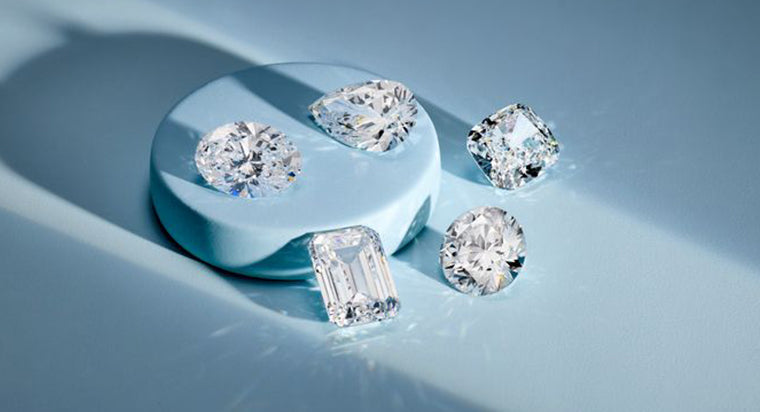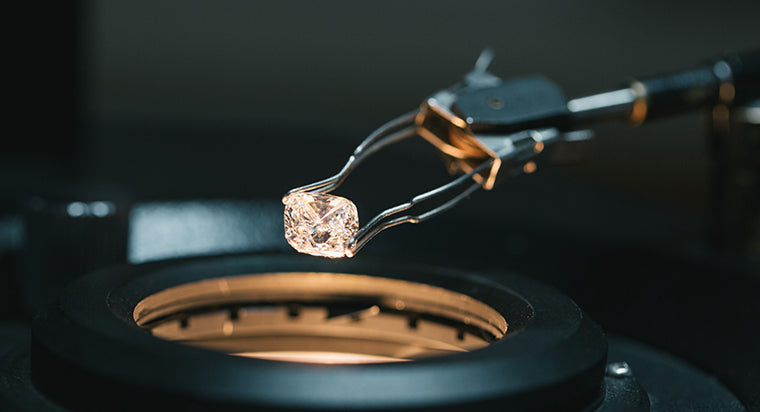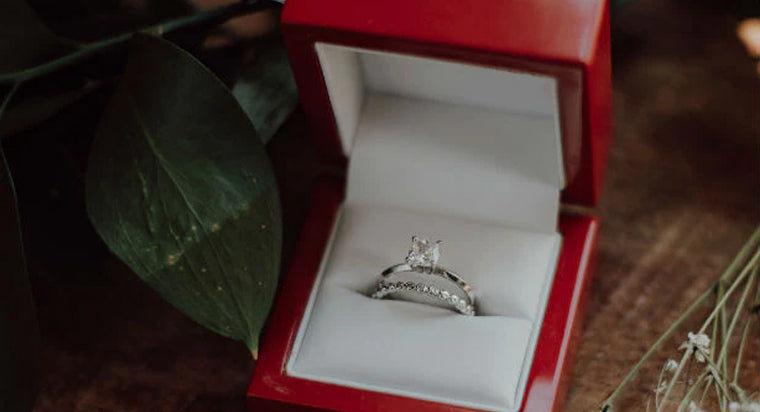The Secrets to Smart Lab Grown Diamond Shopping - Unlocking Savings

For many reasons, lab grown diamonds have become an ethical alternative to mined diamonds. They are environment friendly and offer a cost-effective option for those seeking the brilliance and beauty of natural stones without the expense. Lab diamonds are made in a laboratory, which usually takes 6 to 10 weeks. They are formed when carbon is exposed to pressure and heat, just as natural diamonds are formed within the earth – except that process takes billions of years. Therefore, these gorgeous lab grown stones are chemically and visually identical to natural stones. They're a perfect choice for eco and ethically-conscious individuals who still want the classic choice of a diamond ring.
However, making a savvy purchase requires more than just choosing a lab grown diamond; it involves understanding key factors and taking a few strategic approaches to your diamond ring. In this article, we'll unveil five secrets to help you save money when buying a lab grown diamond.
1. Understand the 4 Cs
The 4 Cs don't only apply to naturally formed diamonds. Before delving into the world of lab grown diamonds, it's essential to grasp the fundamentals – carat, cut, color, and clarity. Carat is the weight or size of the stone. The cut sometimes alludes to the shape, but it also describes the faceting and cutting of the stone, which helps it utilize light properly to produce fire and brilliance. Finally, the color represents how close to being colorless the diamond is, while the clarity denotes if there are any imperfections or inclusions.
When it comes to lab diamonds, there is often less variability in these factors compared to earth-mined stones. Nevertheless, educating yourself on these factors empowers you to make informed decisions based on your preferences and budget constraints because lab created stones can vary in each of the 4C's. Generally, the higher the grade, the more expensive the stone. However, it can be challenging for the naked eye to note minute cut, color, and clarity differences. Therefore, you may decide you're just as happy with an "E" or "F" rated diamond instead of the highest grade possible, a "D," because you can't really tell the difference when it's in a setting on your finger. By prioritizing the aspects that matter most to you, you can make cost-effective choices without compromising on the overall quality of the diamond.
2. Explore Different Diamond Shapes
While cut is sometimes referred to as shape, they are not the same. The shape of the diamond describes its profile; for example, round, emerald, or heart-shaped.
The shape of a diamond can significantly influence its price as well. Round diamonds, typically called round brilliant, generally command a higher price than other shapes. A round stone is the traditional and most popular choice, which can inflate the cost. Additionally, rounded stones are thought to utilize light the best, providing the most scintillation, fire, and brilliance.
Lab grown diamonds can come in various shapes; With Clarity offers everything from round to a vintage-inspired Marquise. Ultimately, it depends on preference, but to maximize savings without sacrificing aesthetics, consider exploring less common shapes such as princess or cushion cuts. Doing so lets you find a diamond that aligns with your style while fitting comfortably within your budget. This is where retailers like With Clarity, which offer diverse diamond shapes, can be a valuable resource.
3. Diamond Prices Jump at Certain Carat Weights
Carat size is a crucial factor that directly impacts the cost of a diamond. Carat is the diamond's weight, but it also correlates to size. Obviously, a 3-carat stone will look much bigger than a half-carat stone. While the price may not fluctuate too much if you're looking at a diamond that's .10 of a carat bigger, there is a point where the price tag jumps. Therefore, understanding how diamond prices vary at specific carat weights is vital when making budget-conscious decisions.
For example, the GIA (Gemological Institute of America) notes that "magic number" diamonds, which are stones at the more recognizable carat weights of 0.25 ct, 0.50 ct, 0.75 ct, 1.00 ct, etc., tend to cost more than a diamond that's just a fraction below these popular sizes, like .96 or .44. Alternatively diamonds that are a fraction above will usually cost more. These rules hold true with lab diamonds, making it beneficial to find a retailer, like With Clarity, that offers diamonds at price points outside these "magic numbers," including stones that are a few points below. Additionally, expert gemologists provide guidance on optimal carat weights to achieve the best value for your money. That way, you can get the best of both worlds – a gorgeous stone at the right size and an intact budget!
4. Settings that Save Money
Your ring's setting refers to the features outside of the diamond, like the shank and prong setting. While the setting may take a backseat to the diamond, your choice of setting plays a significant role in the overall cost of a lab grown diamond ring.
Think about if you want a setting with more than one shank, like a split-shank diamond ring. Each shank features a row of pave-set diamonds. The choice of metal can impact the cost, with white gold providing an identical appearance to platinum but at a lower price. To this end, opting for a simple solitaire setting can be more budget-friendly than intricate studded or multi-row settings.
Fortunately, With Clarity can help guide you through these choices and allow you to customize your ring so you can add as little or as many details as you would like. Our expert gemologists can help you find a setting that enhances the diamond's beauty and aligns with your budgetary considerations.
5. Compare Prices from Different Retailers
Like traditional diamonds, prices for lab grown diamonds can vary between retailers. Comparing prices from different sources is crucial to ensure you get the best value for your money. Look for reputable dealers and consider customer reviews to gauge the authenticity and quality of the diamonds. You'll also want to check out the retailer's policy, such as whether or not they allow returns or offer resizing.
Online retailers often offer a more comprehensive selection and competitive pricing. This makes it worthwhile to explore options like With Clarity, which is happy to provide customer-centric services like Home Preview, allowing you to try on two replica rings in the comfort of your home before making a final decision. As with any purchase, it's important to research and weigh your options to ensure you get the most value.
Lab Diamonds offer a Stunning Look and Luxurious Savings
Saving money on a lab grown diamond purchase requires a combination of education, research, and strategic decision-making. However, by opting for eco-friendly and ethical lab-created diamonds, you're already making a budget-friendly choice. By understanding the key factors that influence diamond prices, exploring various options, and leveraging the expertise of reputable retailers like With Clarity, you can find a beautiful lab grown diamond that aligns with your preferences and budget. You're not only saving money but also contributing to a more sustainable and ethical diamond industry.









